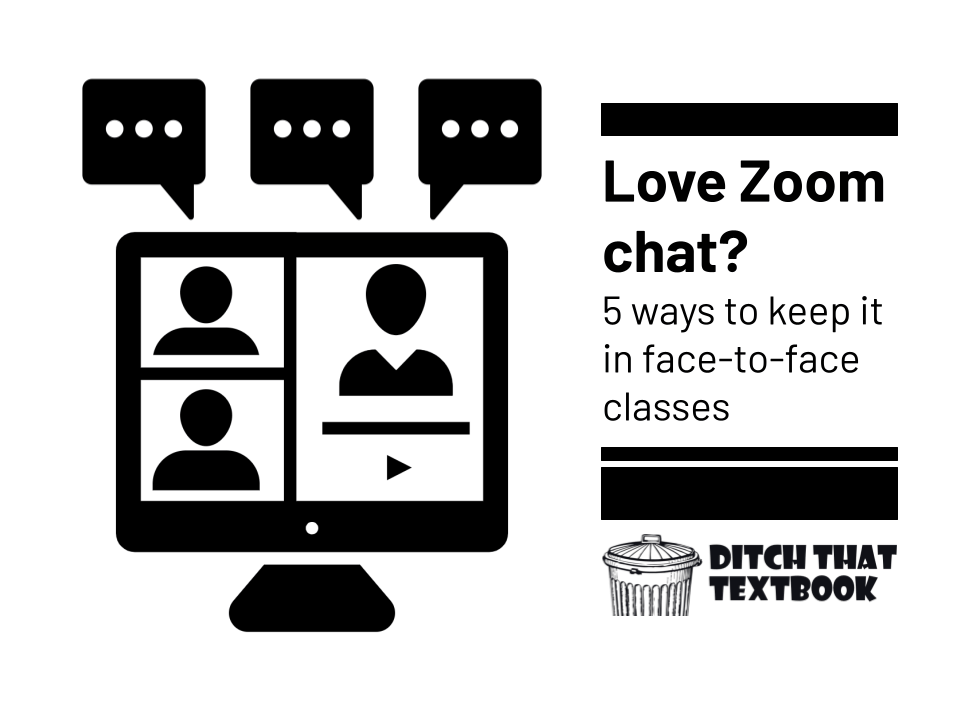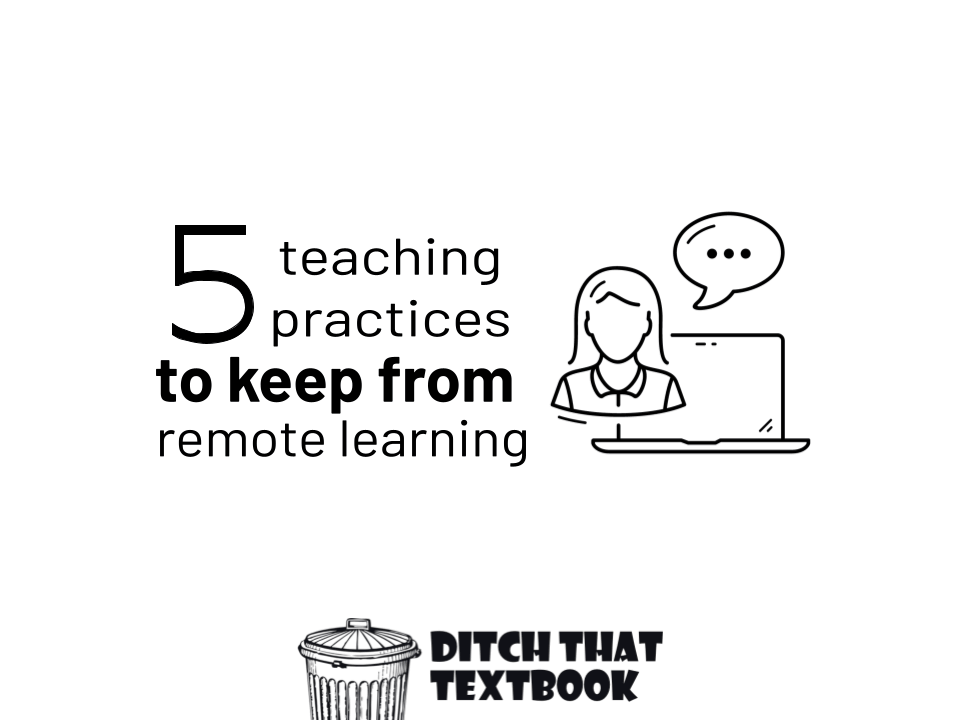
The pandemic changed the way we teach and in some ways for the better! Here are 5 parts of remote teaching we'll keep.
The pandemic changed a lot about education. In a very short period of time, we had to revamp the way we taught, the way we collaborated with colleagues, the way we connected with families, the way we got professional development ... and the list goes on.
But, as always, educators rose to the occasion! We made it work and, in some cases, better than it did before!
We recently took to the Twittersphere and asked the #DitchBook community what activities, tools or resources they found invaluable during remote learning -- and what they will continue to use after we return back to face-to-face instruction.
There were tons of great ideas! You can see them all in the responses to the tweet below. Then scroll down to find five the big ideas that came up multiple times -- and some extra resources, too.
What parts of pandemic-era remote teaching will you keep?
— Matt Miller (@jmattmiller) April 27, 2021
5 parts of remote teaching we'll keep
1. Keep using backchannel chats.
A backchannel is a place where we can swap text-based messages in real time. It's like the chat feature in videoconferencing.
Some of us may have used backchannel chats. Or maybe your students used them in certain apps or tools. But for most of us, the power of the backchannel chat wasn't clear until remote learning.
Students who never spoke up in class were suddenly participating through the Zoom chat. Kids who weren't comfortable turning their camera on at home were sharing brilliant learning on Jamboard.
We were suddenly able to hear from every student with a quick scan of the chat window.
Now that we know how powerful the backchannel chat can be, we can bring in those same opportunities for every voice to be heard in the physical classroom.
Some backchannel chat options for in-person instruction:

Backchannel Chat
Backchannel Chat is a great alternative to Today's Meet and works with other apps like Edmodo and Schoology. There is a free version and paid version ($15/year).

Google Jamboard
Try giving each group their own frame in Jamboard and give students the opportunity to write down their thoughts and share with a small group.

Mentimeter
Mentimeter allows you to create interactive presentations that can poll your audience in real time.
Love Zoom chat?
In this blog post, we outline five ways to keep it in face-to-face classes. You can engage and interact with your students without teaching remotely.
2. Utilize online whiteboards
Who knew how much we would rely on our online whiteboards during remote learning? As we switched from teaching in person to teaching online, we searched for a suitable way to bring those giant whiteboard into our digital space. And wow, did we find some great resources!
These online whiteboards offer us SO much more than just a blank space for our notes and diagrams. Tools like Whiteboard.fi and Whiteboard.chat offer the ability to add images, annotate, draw and more all while giving the teacher the opportunity to monitor and connect with students on their individual boards.
Read more in our post: 15 online whiteboard options for remote learning.
Want to level up your online whiteboard game?
The FREE templates that have been shared are a definite perk of the pandemic-era of teaching. So many resources! Check out these online whiteboard templates to find one that works for your class.
The Do More with Google Jamboard
Online Course!

This course will introduce you to Jamboard features you might not know. It will give you dozens of ideas for using it in the classroom.
Plus, it provides you with:
- A collection of more than 100 templates.
- 40 activity ideas you can use immediately
- Tutorial slides to use as a quick visual review.
- Interactive infographics you can give your students
- Video playlists, posts, and extra resources.
3. Continue SEL check-ins
Social-emotional learning was a top priority for educators as we watched our students handle a world-wide pandemic that turned their lives upside down. Many teachers began, or expanded, daily check-ins with all of their students to gauge how they were doing.
And most teachers I talk to say they will continue these check-ins with their kids long after they all return to the classroom. The importance of putting SEL first is something most teachers already knew, the pandemic just solidified that and helped us hone our skills and share our resources.
25+ SEL activities shared by educators
Mr. Gupton posted this tweet in mid-August of 2020 asking educators to share their first week SEL activities and the response was amazing. We have curated many of the responses into this Wakelet collection. Be sure to check out the original tweet for recent additions and give Mr. Gupton a follow on Twitter!

Weekly Flipgrid check-ins from "Disco Library"
Weekly check-ins are a powerful way to keep in contact with your students. You can make this more manageable by giving each student a specific day of the week that they know you will be responding back to them. Or leave it open and let students drop a video to you whenever they feel the need.
Do a daily check-in with forms.
A Google (or Microsoft) form makes it simple and easy to get started connecting with all of your students. Ask your students to fill out the form as they are logging in for the day. You can review their answers while they complete a digital warm-up or between video calls. Check out Daily Check-in With Google Forms by Mari Venturino for a template and examples.
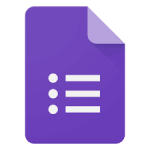
The SEL classroom checklist
The work of making the world the place it ought to be is what social-emotional learning (SEL) is all about. Helping students find their why, their joy, and their purpose is an incredible benefit of being a teacher – and this is our time to help encourage student agency, resilience, and joy. The SEL classroom checklist by Mika Jain.

Social-Emotional Learning: Making time for mindfulness and building a practice of gratitude
Social-emotional learning plays an important role in our classrooms. How can we find time to fit it all in? And what resources are available to help us get started? Social-Emotional Learning: Making time for mindfulness and building a practice of gratitude by Jennifer Saarinen.
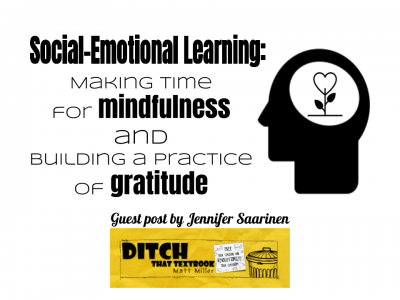
4. Maintain the digital family connections.
Teachers have found new and innovative ways to connect with their students' families:
- Online award ceremonies.
- Virtual back to school nights.
- Zoom parent-teacher conferences.
- Class websites to keep families aware of class activities.
And some of these events turned out to be more effective than they were before! We found many resources that kept our families connected to the classroom and some we won't be giving up even when we head go back to full time face to face instruction.
Digital family connection resources:
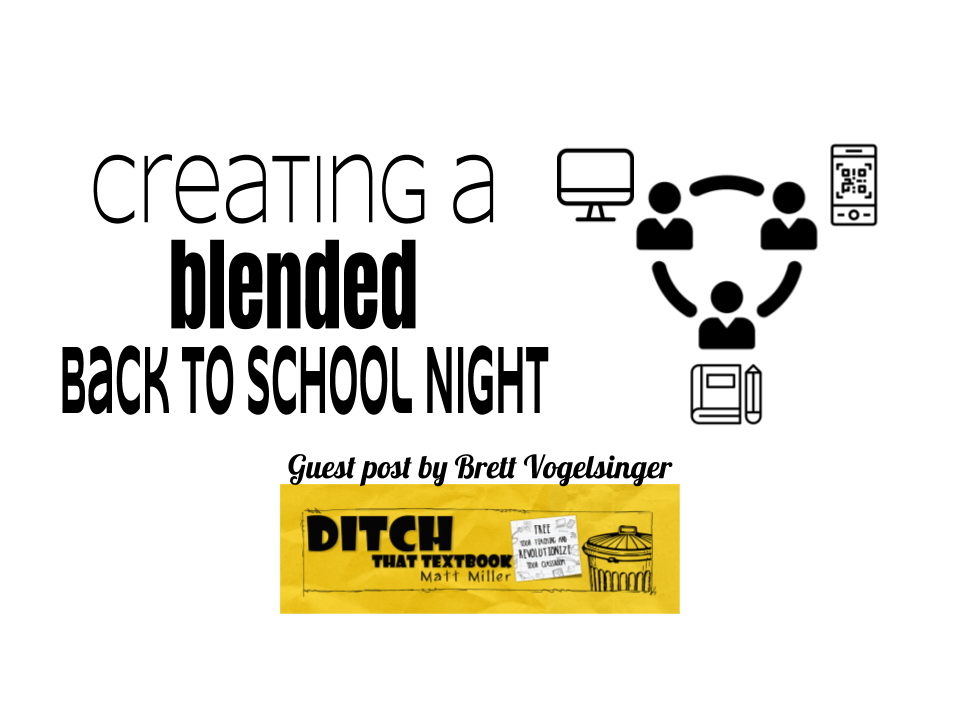
Sometimes our presentations don’t give the full picture. Show your families what your classroom really looks like with a blended Back to School Night! Creating a blended Back to School Night by Brett Vogelsinger.
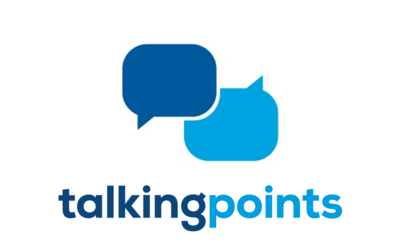
Talking points allows you to communicate with your families. You write your message in your home language, families respond in theirs and it is translated automatically. Teachers can use the web-browser or mobile app, families can use text messages or a mobile app.
Parent-teacher conferences can be overwhelming sometimes. It’s an exciting opportunity for the teacher to share about the student and the parent to learn about the child! But it’s a hurried experience.
This activity helps teachers, students and families better prepare for these incredibly important conversations. We are all here to support our learners and empower them to achieve more!
5. Keep your LMS organized
We have relied on our learning management systems (LMS) more than ever this year. For some (OK, a lot) of us, we realized that our LMS was a hot mess! The need to use our LMS for... well everything, gave us the motivation we needed to organize it for us, our students and our families.
Some of our favorite tips for keeping your LMS organized:
- Number your assignments (and match those numbers in your grade book)
- Use emojis to clarify directions and for students to easily find assignments
- Organize your assignments by topics, or folders, or modules (whatever your LMS calls their sections)
- Keep a consistent system for titling assignments
More LMS organization resources:
What are some remote teaching strategies, tools, activities that YOU will keep?
Share with us in the comments below!
For notifications of new Ditch That Textbook content and helpful links:
Are you looking for quality, meaningful professional learning that both equips and inspires teachers?
Matt provides in-person and virtual keynotes, workshops and breakout sessions that equip, inspire and encourage teachers to create change in their classrooms. Teachers leave with loads of resources. They participate. They laugh. They see tech use and teaching in a new light. Click the link below to contact us and learn how you can bring Matt to your school or district!
Is Matt presenting near you soon? Check out his upcoming live events!


